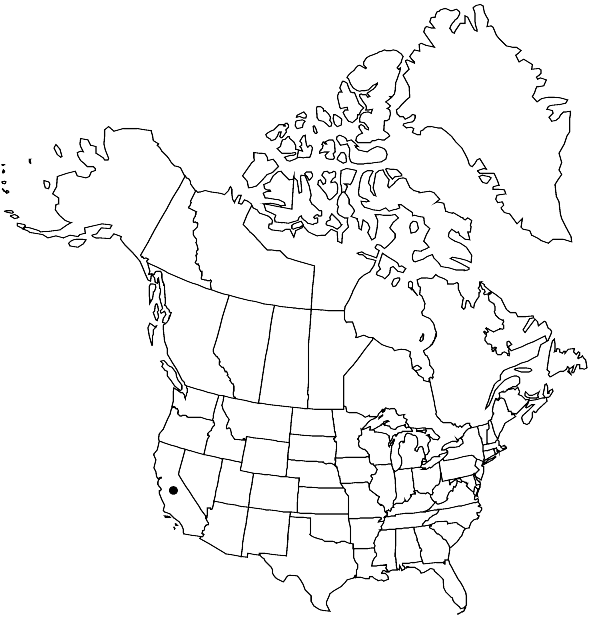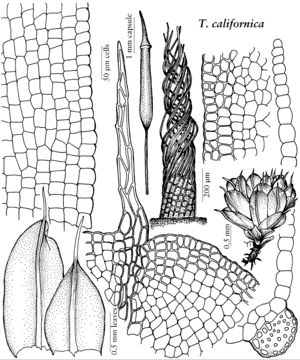Tortula californica
Bryologist 48: 92, figs. h–n. 1945,.
Leaves broadly obovate, occasionally elliptic, apex broadly acute, rounded or occasionally emarginate, awned, margins plane or occasionally weakly recurved proximally, often weakly bordered distally with slightly smaller and slightly more thick-walled cells; costa long-excurrent, lacking an adaxial pad of cells, strong but distally narrow, mostly 2–4 cells across adaxial surface; distal laminal cells inflated hexagonal, occasionally irregularly quadrate, width 18–25 µm, 1:1 or occasionally longitudinally elongate, smooth. Sexual condition autoicous. Sporophytes exerted. Seta 0.9–1.1 cm. Capsule stegocarpic, not systylius, cylindric, erect and nearly straight, urn 2–2.7 mm; peristome 1000–1400 µm, teeth of 32 filaments, twisted once, basal membrane ca. 200 µm; operculum 1.1–1.5 mm. Spores 11–14 µm, spheric, essentially smooth.
Phenology: Capsules mature spring.
Habitat: Arid soil, rock
Elevation: low elevations (0-50 m)
Distribution

Calif., Mexico (Baja California).
Discussion
Tortula californica has now been reported from several counties in southern California (D. H. Norris and J. R. Shevock 2004), and is characterized by obovate leaves with smooth awns, plane margins, and smooth laminal cells.
Selected References
None.
